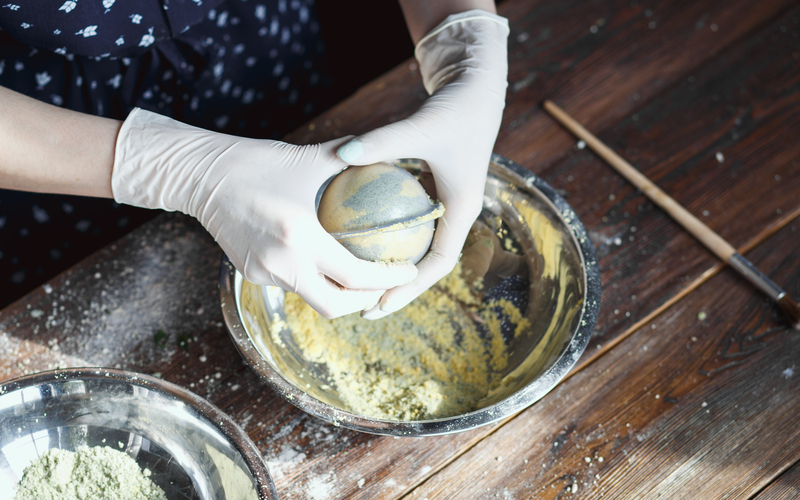Proven Methods to Eliminate Damp Smell with Ease
Posted on 05/09/2025
Proven Methods to Eliminate Damp Smell with Ease
A persistent damp smell can make even the loveliest home uncomfortable. It not only affects the atmosphere but can also indicate underlying issues like moisture build-up or mold that may impact both property and health. If you're looking to get rid of damp odors quickly and for good, you've come to the right place. In this comprehensive guide, we'll explore tested and effective ways to remove musty smells, prevent them from recurring, and create a fresher, healthier living environment.

Understanding Damp Odor: What Causes That Musty Smell?
Before diving into methods for removing damp smells, it's important to recognize what causes these unpleasant odors in the first place. The classic "musky" or "wet dog" scent stems from the presence of moisture, which encourages the growth of mold and bacteria. Some common sources of damp smells include:
- Poor ventilation in bathrooms, kitchens, basements, or closets
- Leaky pipes or roofs
- Condensation around windows or walls
- Flooding or water spills that aren't dried thoroughly
- Wet fabrics, carpets, or upholstery
- High indoor humidity levels
If left untreated, musty odors can linger, making your home less inviting and potentially harming your health. Targeting the root cause of dampness is essential for lasting freshness.
Key Signs of Persistent Damp Smells
- Stale, earthy, or musty odors in specific rooms or throughout the house
- Visible mold patches or mildew spots on walls, ceilings, or fabrics
- Discoloration or damp patches on walls, corners, or ceilings
- Increased allergy symptoms such as sneezing, coughing, or eye irritation
- Damp or clammy feeling in the air
*If you identify these signs, it's time to take action with the proven methods to eliminate damp smell with ease described below.*
Step-by-Step Methods to Eliminate Damp Smell
1. Locate and Address the Source of Dampness
The number one rule for eradicating musty odors is to find and fix any source of moisture. Otherwise, even the best deodorizing efforts will only offer temporary relief. Here's how to do it:
- Conduct a thorough inspection: Check for leaks under sinks, near appliances, on ceilings, and along walls.
- Examine hidden areas: Don't overlook basements, attics, behind furniture, inside closets, and under carpets.
- Look for mold growth: Black, green, or gray patches signal active mold and a need for immediate remediation.
- Monitor humidity: Use a hygrometer to track indoor levels - ideally, they should stay below 60%.
Fix leaks, improve drainage, and address condensation as soon as you detect them. This initial step will have the greatest impact on removing damp odors for good.
2. Enhance Ventilation Throughout Your Home
Proper airflow is crucial for eliminating and preventing musty smells. Here are some simple ways to improve ventilation:
- Open windows and doors daily, even for a short time, to let fresh air circulate.
- Install or use extractor fans in bathrooms and kitchens, where humidity is highest.
- Use ceiling fans or portable fans to help dissipate moisture and keep air moving.
- Avoid blocking air vents with furniture or drapes.
- Consider a heat recovery ventilation system for a whole-home solution.
Continual ventilation is a proven method to banish lingering damp odors.
3. Dry Out Affected Areas Completely
Once you've identified and solved the source of moisture, it's important to thoroughly dry wet materials. Follow these tips:
- Use a dehumidifier to remove excess moisture from the air, especially in basements or damp-prone rooms.
- Remove and wash wet fabrics, rugs, or curtains. Dry them outside in the sun if possible.
- Hang out cushions, pillows, and upholstery. For stubborn musty smells, sprinkle with baking soda, let sit, then vacuum.
- Lift carpets and ventilate underneath if water has leaked onto them.
- Bake out smaller items (like shoes or books) in sunlight where practical.
Completely eliminating trapped moisture is fundamental to remove any damp scent in your home.
4. Deep Clean Surfaces and Soft Furnishings
Once things are dry, it's time to clean all surfaces and fabrics that can harbor musty smells:
- Wipe down hard surfaces using a mix of hot water and white vinegar or specially formulated antibacterial cleaners.
- Scrub mold or mildew patches with a solution of bleach (1 part bleach to 4 parts water), always wearing gloves and ensuring good ventilation.
- Launder curtains, pillowcases, bedspreads, and washable cushion covers using hot water and an extra rinse cycle.
- Shampoo carpets, rugs, and upholstery. Consider a professional cleaning if odors persist.
Thorough cleaning not only refreshes your home but ensures no hidden source of damp odor remains.
5. Neutralize Odor Using Natural Deodorizers
If you're looking for safe ways to eliminate musty smells naturally, consider these trusted deodorizers:
- Baking Soda: Sprinkle it on carpets or upholstery, leave overnight, and vacuum up. Place open boxes in closets or corners to absorb moisture and odors.
- Activated Charcoal: Set out bags or bowls to effectively trap musty smells in the air.
- White Vinegar: Place bowls of vinegar in smelly rooms to neutralize airborne odors. Vinegar's scent dissipates quickly.
- Coffee Grounds: Fill small containers and set them around your home to mask and absorb foul odors.
- Lemon Slices: For a citrus-fresh aroma, leave out lemon slices or add to cleaning water for a natural scent boost.
These easy, affordable options are a proven method to freshen indoor air while tackling dampness.
6. Use Commercial Odor Eliminators and Air Purifiers
When natural remedies aren't enough, several targeted products are designed to remove damp odors, including:
- Specialist musty odor eliminator sprays for fabrics and hard surfaces
- Room air fresheners or gel beads that trap and replace odors
- HEPA or activated carbon air purifiers that filter air and absorb airborne particles and scents
- Moisture absorbers containing silica gel or calcium chloride crystals
Just remember to read instructions carefully and ensure sufficient ventilation when using chemical-based products.
7. Prevent Future Damp Odors: Proactive Measures
Once you've successfully eliminated damp smells, prevention is key to keeping your home fresh year-round. Try these tips:
- Monitor humidity levels: Regularly use a hygrometer to ensure levels remain under 60%.
- Ventilate regularly: Even during winter, open windows for short bursts daily.
- Use moisture-absorbing products: Place them in wardrobes, under sinks, and in basements.
- Fix leaks fast: Address any water issues immediately to avoid recurrence.
- Store items thoughtfully: Keep fabrics and papers in airtight containers in risk-prone areas.
- Keep up with cleaning: Regular washing and vacuuming reduce the risk of unwanted smells returning.
Proactive care means you won't have to deal with stubborn musty odors again!
Extra Tips: Room-Specific Strategies for Removing Damp Smell
Different parts of the home may require specific solutions for optimal freshness. Here's how to tackle odors in every room:
Basement
- Install a dehumidifier for ongoing humidity control.
- Seal foundation cracks and check for leaks after heavy rain.
- Use perforated plastic mats or raise storage off the ground to avoid water damage.
Bathroom
- Run an extractor fan during and after showers.
- Leave the door or window open post-shower to help air out the room.
- Wipe down tiles and floors to prevent water pooling.
Kitchen
- Dry out sinks and countertops regularly.
- Check under appliances for trapped moisture.
- Empty bins and clean floors to prevent old food and spills from contributing to bad smells.
Closets and Wardrobes
- Use hanging moisture absorbers or silica gel packs.
- Leave doors slightly open periodically to air out clothes.
- Launder and dry garments thoroughly before storing.

Health Implications of Ignoring Damp Smells
A persistent musty odor is more than just a nuisance--it could be a sign of mold buildup, which may jeopardize your health. Exposure to mold and damp environments has been linked to:
- Respiratory issues (asthma, sinus congestion, coughing)
- Increased allergies and skin irritations
- Headaches and eye irritation
- Weakened immune response in sensitive individuals
If you notice ongoing symptoms and damp smells don't resolve despite your efforts, it may be time to consult a specialist for professional mold remediation.
Conclusion: Enjoy a Fresh, Odor-Free Home
Having a clean, fresh-smelling space is both achievable and sustainable with these proven methods to eliminate damp smell with ease. By identifying the source of moisture, improving ventilation, drying out affected areas, deep cleaning, and using effective odor-absorbing solutions, you can ensure damp odors are truly gone. Remember to follow up with regular prevention and act quickly at the first signs of dampness. With these tips, your home will stay welcoming, healthy, and free of musty smells year-round.
Ready to banish those unpleasant odors for good?
Start applying these strategies today and reclaim a fresh, inviting atmosphere in every room!



